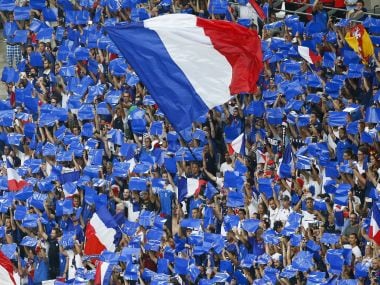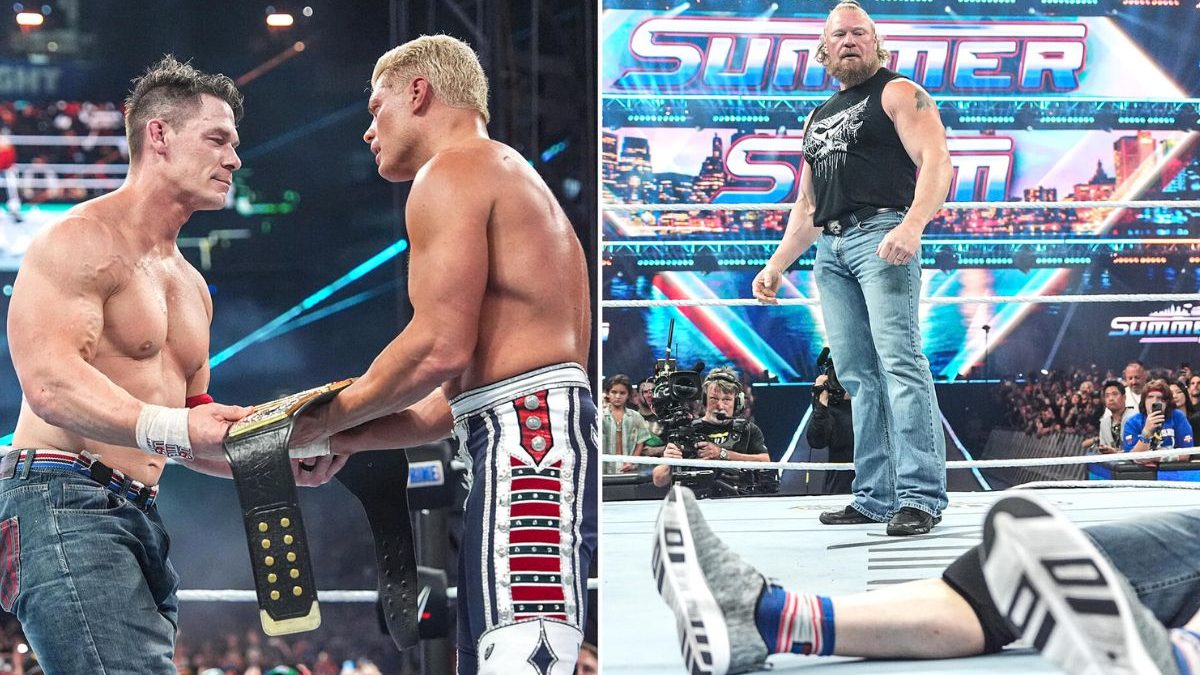Paris: In the pantheon of French footballing gods, Michel Platini and Zinedine Zidane stand alone, majestic in their merit, angelic in their status. But this Sunday, on the grandest stage – the Euro 2016 final – Antoine Griezmann, Paul Pogba and a new generation of players, millennials who yearn for success and recognition, can follow in the footsteps of France’s two footballing heroes. At the heart of Les Bleus’s exploits, though, lies the question of French unison. ‘Le foot’ is the global game, a mass religion of stoutly devout adepts, for whom the game – primordially 22 men huffing and puffing over a ball’s dominion - is not recreational, not merely a source of physical exercise and the joy derived thereof, but a soothing 90 minute rhapsody that transcends the bane and banality of life – no meta-explanation or validation is required. In France, ‘le foot’ is not per se the beautiful game in the way that it’s perceived in staunch football-loving nations, like England and Germany, where the profound sentiment the game evokes has allotted the sport a spot at the heart of society. [caption id=“attachment_2884394” align=“alignleft” width=“380”]  France fans at Euro 2016 games. Reuters[/caption] The French are idiosyncratic, somewhat different: football is the number one sport in spite of the popularity of both handball and basketball, but society still has an uneasy relationship with the game. In plenty of European countries, the urban working classes endorsed football as a favorite sport and pastime, but France never became truly industrialized. The working class remained small and in the rural hinterland clubs rarely united the local community. Lens, Marseille and Saint-Etienne, proletarian cities, were hotspots of the game. Workers supported the local clubs. They wanted to belong. Then France’s seminal moment arrived – not in 1984 when Platini, Alain Giresse and Tigana won the European Championship in Paris. That victory had footballing ‘finesse,’ but didn’t transcend the sport. In July 1998, France’s World Cup win on home soil did. Zidane’s headers, either side of the half, and Emmanuel Petit’s late angled strike, struck with a mundane finality, crowned Les Bleus world champions. The mighty Brazilians had been humiliated. Later that night, Zidane’s image was projected on the iconic Arc de Triomphe. France and one million delirious fans reveled on the Champs-Élysées in footballing ecstasy. Zidane had kissed the World Cup trophy, a potent image that immediately granted him the status of national megastar. Sunday night, Griezmann’s immaculate, boyish face may also overlook Paris’s famed avenue. In the semi-final, the 25-year old was pivotal in overcoming Germany, a game that turned on a maddening Teutonic inability to score and a split-second moment of misjudgment by Italian referee Nicola Rizzoli. Yet, there was a resilience and togetherness to the French. For two years, they had build up to this tournament. After six games, they have delivered with an overarching sangfroid, with a new identity gradually emerging. Today Les Bleus are no longer a total exponent of Clairefontaine, France’s famous national training center, nestled in the lush surroundings of the Rambouillet forest, an hour outside the French capital. There, the skills of elite young French football players, as early as the age of 13, are developed, honed, fine-tuned and then perfected, all in accordance with the national curriculum. Clairefontaine has been the incubator for Thierry Henry, Pogba and many others. Yet Clairefontaine’s existence is contentious - after all what are the selection criteria to become a part of the nation’s crème de la crème ? Who do you select and who do you exclude? It’s akin to designing the admittance requirements for a prestige university. In the spring of 2011, Mohamed Belkacemi, a mid-level football official at the French football federation the FFF, leaked the verbatim record of a conversation between then national team coach Laurent Blanc and his federation’s top officials. They discussed the introduction of quotas to limit dual-nationality players at youth training academies. Blanc favored the idea of quotas and called black players ‘big, strong, powerful.’ The transcript revealed that Blanc preferred players with ‘our culture, our history.’ From Blanc’s point of view, the question of double nationality was, however, reasonable due to the nebulous FIFA rules. Consider this: a boy of Cameroonian parents born in Lyon is selected for a youth academy, but there is an equally talented player born to exclusively French parents. Whom should the FFF invite for the training center in the knowledge that the first boy may still opt to play for Cameroon at a later stage? Griezmann is a prime example that Clairefontaine is not a perquisite to penetrate elite football’s gilded bubble. At the age of 13, he moved to San Sebastian, a small town just across the Spanish-French border and 500 miles away from his home, to join Real Sociedad, after one refusal too many by French clubs. Youth coaches feared that Griezmann’s frail frame wouldn’t allow him to play football at the highest level, giving in to a modern day tendency to scout for strong and bulky players in spite of the rise of the splendid Andres Iniesta and the mercurial Xavi. In 2010, Griezmann impressed at the U-19 European Championship on home soil, scoring twice in a 5-0 hammering of Austria and forming an integral part of France’s tournament-winning run. Today, ‘Grizou’ is France’s talismanic striker, the poster boy of a talented, if inconsistent, team. Dimitri Payet, N’Golo Kante, Laurent Koscielny and Olivier Giroud all followed a similarly fragmented path. Back, in 1998, Les Bleus’s victory received much attention. The French fans had not particularly liked Zidane, but when he, almost singlehandedly, won the World Cup, France embraced its new son. All of a sudden, the ethnic diversity of the team was highlighted. Zidane had Kabyle descent in Algeria. Midfield lynchpin Patrick Vieira was born in Senegal, with his grandfather having served in the French army. Marcel Desailly was of the Ga–Dangme ethnical group in Ghana. In total, more than 50 percent of the squad’s players had foreign ancestors. At last, France had come to accept its colonial past. The national team represented a ‘cultural mosaic’ and a beacon for multiculturalism, representing a new France with assimilated and uniformly French citizens. Dutch professor Ian Buruma noted that the victory of multi-ethnic and PanAfrican nature was construed as national superiority born from the tolerance of the French Enlightenment and the fraternity of the French Revolution, not as a mark of a long and bloody colonial history. And so, the idea of a French Rainbow nation was born - ‘black, blanc, beur a la francaise’ (beur is a French term to describe persons, like Zidane, with a North African background.) – but those faint hopes were, even within days of the victory, torn apart by critical commentators, and then by a long chain of indignant events, including the mutiny in Kysna during the 2010 World Cup and ‘Le Sex Tape.’ The scandals have always fueled the argument of the anti-immigration undercurrents of French society that black and muslim players are not compatible with France and the country’s culture. In France, Les Bleus are the ultimate vehicle to discuss national identity and nationhood. Going into Euro 2016, Didier Deschamps selected a very deep squad with, again, a pronounced foreign footprint: ten out of 23 players have African heritage. Midfielder Yohan Cabaye has Vietnamese ancestors in the paternal line, while striker Andre-Pierre Gignac identifies as a ‘Manouche.’ That richness in players, like in 1998, is the result of French football’s longstanding open approach to players of all origins. Historically, France was one of the very first countries to embrace the idea of nationhood, so strongly formulated in the early days of the Republic, but, like many former imperial powers, France is groping with a new sense of identity in the post-colonial era, where the notion of multiculturalism, so strongly and historically present in port city Marseille, may have eroded and even replaced the traditional ideas of the Republic. And so come the final, the old republic is fragile, the new nation shaky. No, France was neither paralyzed by transport strikes nor infested with IS militants during the tournament, but high unemployment rates, security threats and social tensions have nearly immobilized the country. Deeply unpopular - inspite of his tricolor scarf at every game - president Francois Hollande presides over a rudderless nation. In the build-up to the final, Deschamps said that “We don’t have the power to solve people’s problems but we can generate emotions so they forget their worries.” So, as the tournament comes to a climax, France will truly be ‘bleu, blanc, rouge’, but only for 90 minutes.
At last, France had come to accept its colonial past. The national team represented a ‘cultural mosaic’ and a beacon for multiculturalism, representing a new France with assimilated and uniformly French citizens.
Advertisement
End of Article


)

)
)
)
)
)
)
)
)



